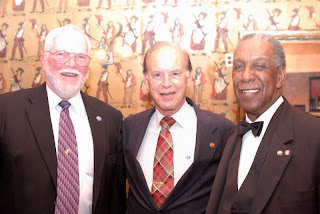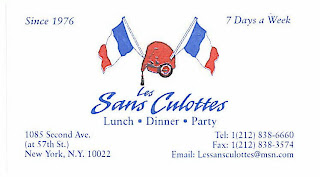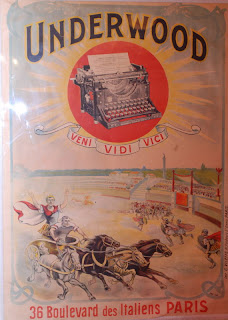Trevor Stewart is headed back out on the road next month. Lots of air travel, actually. He e-mailed me his itinerary today for publicity purposes, I assume, but I can’t promise you anything, Trevor. The places you will visit have relatively few Magpie readers. (In five years of publishing The Magpie Mason, it has been visited by only 1,071 unique readers in Australia! Don’t they speak English down there?)
 |
Magpie file photo
Trevor Stewart |
Without further ado, Bro. Trevor Stewart’s (if you somehow don’t know who he is, just scroll down to the Magpie Index at bottom left and click on his name) 2013 ANZMRC Lecture Tour of Australasia!
I simply have copied and pasted Trevor’s own format: Date, Locale, Lodge Name & Number, and Lecture Topic.
Monday, 5th August
Singapore
Lodge St Michael 2933 EC
A Fresh Look at Some Masonic Symbols: A Personal Perspective
Wednesday, 7th August
Kuala Lumpur
Lodge Tullibardine-in-the-East 1118 SC
TBA
Monday, 12th August
Hong Kong
Lodge Cosmopolitan 428 SC
Scottish Masonic Processions
Thursday, 15th August
Bangkok
Combined Lodges SC, EC & IC (Lodge Lane Xang)
TBA
Saturday, 17th August
Auckland (North Shore)
ANZMRC and SRIA combined
The Remarkable Contribution of Martinez de Pasqually – A Truly Original French-born Masonic Innovator
Monday, 19th August
Winchester (Canterbury)
Midland District Lodge of Research 436 NZC
A Fresh Look at Some Masonic Symbols: A Personal Perspective
Tuesday, 20th August
Dunedin
Research Lodge of Otago 161 NZC
Gentlemen Entrants in 17th Century Scottish Lodges: Motivations, Processes and Consequences
Friday, 23rd August
Invercargill
Research Lodge of Southland 415 NZC
Robert Burns: Bard, Mason, and National Treasure
Saturday, 24th August
Christchurch
Masters & Past Masters Lodge 130 NZC
Gentlemen Entrants in 17th Century Scottish Lodges: Motivations, Processes and Consequences
Saturday, 31st August
Blenheim or Nelson
Top of the South Research Lodge 470 NZC
The Remarkable Contribution of Martinez de Pasqually – A Truly Original French-born Masonic Innovator
Monday, 2nd September
Wellington
Research Lodge of Wellington 194 NZC
Those Two Pillars Again! – A Personal Re-examination of a Recurring Masonic Image
Thursday, 5th September
Inglewood (Taranaki)
Research Lodge of Taranaki Province 323 NZC
Robert Burns: Bard, Mason, and National Treasure
Friday, 6th September
Palmerston North
Research Lodge of Ruapehu 444 NZC
The Curious Case of Bro Gustav Petrie: A Model for Doing Masonic Research
Tuesday, 10th September
Hastings
Hawke’s Bay Research Lodge 305 NZC
Gentlemen Entrants in 17th Century Scottish Lodges: Motivations, Processes and Consequences
Thursday, 12th September
Tauranga
Waikato Lodge of Research 445 NZC
The Curious Case of Bro Gustav Petrie: A Model for Doing Masonic Research
Saturday, 14th September
South Auckland – Mangere
United Masters Lodge 167 & Research Chapter 93 (NZ)
Robert Burns: Bard, Mason, and National Treasure
Monday, 16th September
Cairns
WHJ Mayers Memorial Lodge of Research UGLQ
The Edinburgh Register House MS (1696) – Our Earliest Known Masonic Ritual
Wednesday, 18th September
Brisbane
Barron Barnett (Research) Lodge 146 UGLQ
Rev’d Dr. J. T. Desaguliers’s Visit to Edinburgh, 1721
Friday, 20th September
Townsville
WH Green Memorial Masonic Study Circle UGLQ
A Fresh Look at Some Masonic Symbols: A Personal Perspective
Monday, 23rd September
Sydney
Discovery Lodge of Research 971 NSW/ACT
The Edinburgh Register House MS (1696) – Our Earliest Known Masonic Ritual
Tuesday, 24th September
Canberra
Linford Lodge of Research NSW/ACT
TBA
Friday, 27th September
Melbourne
Victorian Lodge of Research 218 UGLVictoria
The Remarkable Contribution of Martinez de Pasqually – A Truly Original French-born Masonic Innovator
Monday, 30th September
Launceston
Launceston Lodge of Research 69 Tasmania
Rev’d Dr. J. T. Desaguliers’s Visit to Edinburgh, 1721
Thursday, 3rd October
Adelaide
Lodge of Friendship 1 South Australia/NT
TBA
Between Wednesday to Friday 9 – 11 October
Perth
Western Australia Lodge of Research 277 WA
TBA
Additional papers which can be chosen:
- Enlightenment in the Alps – Shelley’s forgotten ‘Rosicrucian’ novel, St. Irvyne (1811)
- Polymnia and the Craft – a preliminary examination of some early Scottish Poetry and the Craft
- The HRDM – a fourth visitations to a curious eighteenth-century Masonic phenomenon from the north-east region of England




































































